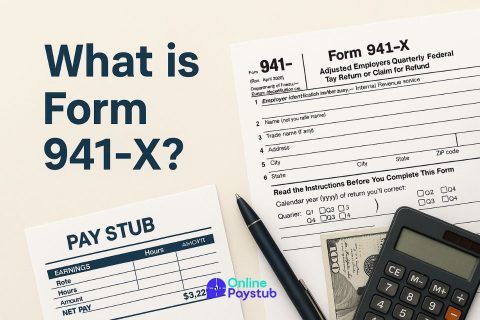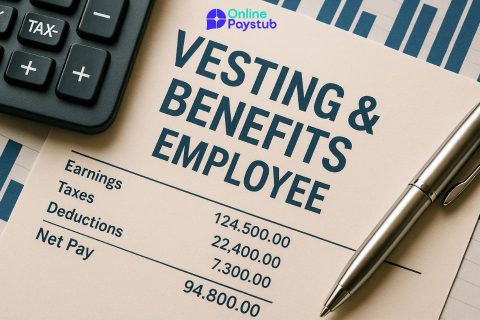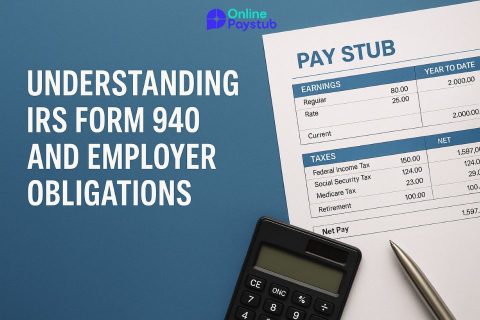For freelancers, independent contractors and businesses, understanding the difference between IRS Form W-9 and Form 1099 is extremely important. These two forms serve different functions for tax reporting and legal compliance. Using each correctly will ensure accurate record keeping and help you avoid potential penalties. Knowing when and how to use these forms is a critical step in the proper functioning of the tax process.
What Is a W-9 Form and When Do You Use It?
Form W-9, also known as the “Request for Taxpayer Identification Number and Certification,” is a document used by businesses to collect basic tax information from independent contractors or vendors. This includes the contractor’s legal name, business name (if applicable), Social Security Number (SSN) or Employer Identification Number (EIN), and federal tax classification.
The W-9, also known as the “Request for Taxpayer Information,” is a form typically used when engaging the services of a freelancer, contractor, or vendor who will be paid more than $600 in a tax year. This form is not sent to the IRS, but rather, it is retained by the payer to generate the 1099 form at a later date.The “Identification Number and Certification” form is used by businesses to collect basic tax information from independent contractors or vendors. This includes the contractor’s legal name, business name (if applicable), Social Security Number (SSN) or Employer Identification Number (EIN), and federal tax classification.
What Is a 1099 Form and What Is It Used For?
The 1099 form is used to report various types of income other than wages, salaries, and tips. For independent contractors, the most relevant version is the 1099-NEC (Nonemployee Compensation), which reports earnings of $600 or more in a tax year.
The form is submitted to the IRS by the business that made the payments and a copy is provided to the contractor. It enables the IRS to ensure that the contractor properly reports the income on their personal or business tax return.
Key Differences Between W-9 and 1099
- Purpose: W-9 is used to collect taxpayer information; 1099 reports income to the IRS.
- Who Provides It: Contractors submit a W-9 to clients; clients issue a 1099 to contractors.
- IRS Submission: W-9 is kept on file, not submitted; 1099 is filed with the IRS.
- Timing: W-9 is completed before payment; 1099 is issued after year-end for reporting.
When to Request a W-9 and When to Issue a 1099
- Request a W-9 before making any payments to an independent contractor or vendor. This ensures you have the correct taxpayer information needed for end-of-year reporting.
- Issue a 1099-NEC in January of the following year if you’ve paid that contractor $600 or more during the tax year.
Using both forms appropriately ensures compliance with IRS regulations and supports transparent financial reporting for both parties.
Understanding the 1099-NEC vs 1099-MISC
The IRS reintroduced Form 1099-NEC in 2020 to separate nonemployee compensation reporting from the broader 1099-MISC form. While both are used for reporting payments, they serve distinct purposes:
- 1099-NEC: Used strictly to report payments of $600 or more to independent contractors, freelancers, and other nonemployees.
- 1099-MISC: Used for various types of miscellaneous income like rent, legal settlements, royalties, and other non-labor payments.
Choosing the correct form is essential to ensure tax accuracy and avoid delays or penalties.
W-9 vs 1099: Common Use Cases and Scenarios
Here are typical scenarios where W-9 and 1099 forms are used together or separately:
- Scenario 1: A business hires a freelance designer and pays $1,200 over several months. The business collects a W-9 first and issues a 1099-NEC in January.
- Scenario 2: A landlord receives rental income exceeding $600. The payer issues a 1099-MISC.
- Scenario 3: A vendor receives a W-9 but is not paid over $600 in the tax year—no 1099 is required.
These forms go hand-in-hand in many contractor relationships but differ in function and filing responsibilities.
How to Fill Out a W-9 Form: Step-by-Step Guide
Filling out a W-9 form is straightforward. Here’s how:
- Line 1: Enter your full legal name as shown on your tax return.
- Line 2: Enter your business name (if different).
- Line 3: Check your federal tax classification (e.g., Individual/Sole Proprietor, LLC, Corporation).
- Line 4: Exemptions (most individuals can skip this).
- Lines 5–6: Enter your address and ZIP code.
- Part I: Provide your Social Security Number or Employer Identification Number.
- Part II: Sign and date the form to certify accuracy.
The completed W-9 is returned to the payer—not the IRS.
How to Complete a 1099-NEC and 1099-MISC Form
These forms must be accurately completed to avoid tax complications:
- 1099-NEC:
- Box 1: Enter the total amount paid to the nonemployee.
- Box 4: Backup withholding (if applicable).
- Include payer and recipient name, address, and TIN.
- Box 1: Enter the total amount paid to the nonemployee.
- 1099-MISC:
- Box 1: Rents
- Box 3: Other income
- Box 7: Legal services, etc.
- Box 1: Rents
Once completed, submit Copy A to the IRS and Copy B to the recipient. Deadlines generally fall at the end of January for recipient copies and early February for IRS electronic submissions.
Tax Implications for Contractors and Businesses
W-9 and 1099 forms are central to proper tax reporting for independent work. For contractors, income reported via 1099-NEC is considered self-employment income, subject to self-employment taxes. For businesses, correctly issuing 1099s helps avoid IRS penalties and ensures deductions are properly documented. Failure to comply may result in fines and increased audit risks.
What Happens If You Don’t File a W-9 or 1099?
If a contractor fails to provide a W-9, the hiring party may be forced to withhold 24% of their payments for backup withholding. If a business fails to issue a 1099 to a qualifying contractor, it can face fines ranging from $50 to $290 per form, depending on how late the filing is. Repeated failure or intentional disregard can trigger higher penalties or IRS scrutiny.
W-9 and 1099 Compliance Best Practices
To stay compliant with IRS regulations, consider these best practices:
- Collect W-9 forms before making the first payment.
- Maintain accurate records of all payments over $600.
- File 1099-NEC forms by January 31 each year.
- Use e-filing to minimize delays and reduce errors.
- Regularly update contractor information to ensure accurate TINs and addresses.
Following these guidelines minimizes risks and keeps tax records in order.
Differences Between Contractors and Employees for Tax Purposes
A major point of confusion is classification. Here’s the key distinction
- Contractors: Use W-9 forms, receive 1099-NEC, and pay self-employment taxes. No benefits or tax withholding from payer.
- Employees: Submit W-4 forms, receive W-2, and have taxes withheld by the employer.
Misclassification can result in IRS penalties and liability for back taxes, so understanding the difference is crucial.
Common Misconceptions About W-9 and 1099 Forms
Here are a few widespread myths and the facts behind them:
- “W-9 and 1099 are interchangeable.”
False – W-9 is for collecting info; 1099 reports payments. - “Only large businesses need to issue 1099s.”
False – Any business paying $600+ to a contractor must issue one. - “You don’t need to file a 1099 if you pay via PayPal or credit card.”
Partly true – Payments via third-party processors are reported via 1099-K, not 1099-NEC.
Understanding the purpose of each form avoids costly mistakes and confusion at tax time.




No comments to show.